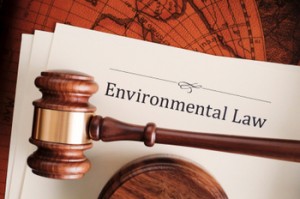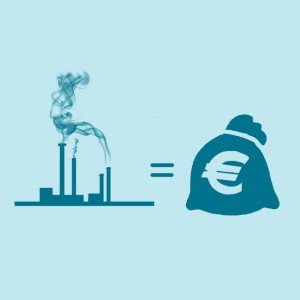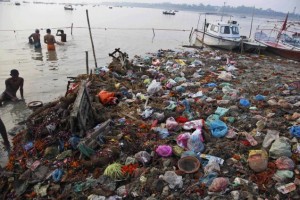In this blog post, Sunidhi, a student of the Rajiv Gandhi National University of Law, Patiala writes about the legal framework in India to protect the environment. The blog post explains the constitutional provisions, statutory provisions, and judicial principles to protect the environment.
Introduction
From Colonial period to the Stockholm Conference[1], no significant endeavor had been made regarding the protection of the environment. This period has exerted more pressure on resources for the development of infrastructure with little or no concern for the environmental. The Stockholm Conference can easily be said to be the landmark in catalyzing India’s attempts to maintain the wholesomeness of the environment. This conference is of particular significance to India as it expressed the policy concern of our country on environmental protection, as a member state, and at the same time, it influenced the process of environmental management in the years to come. Presently, in India, more or less, 200 legislation deal directly or indirectly deal with environment pollution and degradation.
Constitutional aspects of environmental law
The supreme law of the land, the Indian Constitution, exhibits a keen interest in conservation of the environment. The Preamble of the Constitution declares that the State is under an obligation to fulfill the basic aim of socialism i.e. to provide a decent standard of living to all, which can be possible in a pollution free environment. Thus to constitute a socialistic pattern of society, the important aspect of environmental protection cannot be overlooked.[2]
Part III of the Indian Constitution deals with fundamental rights. Also, these rights are enforceable in the court of law (Art. 32). In an ample number of cases, the Supreme Court has held that clean environment is essential to bring some value to life. In many judgments, the Supreme Court has held that “right to life is a fundamental right under Article 21, and it includes the right of enjoyment of pollution free water and air for the full enjoyment of life.”[3] It also added that “if anything endangers or impairs that quality of life in derogation of laws, a citizen has a right to have recourse to Article 32 for removing the pollution of water or air, which may be detrimental to the quality of life.”
Part IV of the Indian Constitution i.e. the Directive Principles of State Policy deal with the environment in Article 47. It directs the state to improve the standard of living and general well-being of the public. To fulfill this constitutional goal, it is necessary that the state should provide pollution free environment. These provisions are incorporated in the Constitution of India by the Constitution (42nd Amendment) Act, 1976. Article 48-A, thus added to the Directive Principles states that it is the duty of government to safeguard the environment i.e. the forests and wildlife. The chapter on Fundamental Duties states that it is the duty of every citizen to take care of and safeguard the natural environment.
Statutory control of environmental pollution
The Water (Prevention and Control of Pollution) Act, 1974 is one of the major laws relevant to the environment as the first of its kind after the Stockholm Conference. It provides for ‘the prevention and control of wholesomeness of water, and also for establishing and conferring appropriate powers upon Pollution Control Board, established for the purpose of achieving the above set purpose.
The Air (Prevention and Control of Pollution) Act, 1981 was enacted as a follow-up of the Stockholm Conference and was enacted for taking appropriate steps for preservation of natural resources of the earth, which among other things include preserving the air quality and control of air pollution. The Act contains a definition clause, which attempts to bring all aspects of air pollution, including noise, within its fold.
In 1986, following the catastrophe of Bhopal, Parliament was roused to address every single environmental issue by enacting a special legislation viz, Environment (Protection) Act, 1986. Under this, the central government has the responsibility for deciding the standards for accident prevention and handling of hazardous waste, oversight of investigations and research on pollution issues, onsite inspections, the establishment of laboratories, and collection and dissemination of information. In this legislative effort, an attempt was also made to control the environmental pollution in a holistic manner instead of sectoral/piecemeal approach.
The modern technological state intensifies the conflict between environmental values and developmental requirements. Legal strategies are necessary to reconcile this conflict and to augment sustainable development. It is very important that repercussions of projects at all levels be analyzed before execution. Environment Impact Assessment (EIA) examines these consequences and predicts future changes in the environment. It guides administrative agencies to balance conflicting social values and environmental quality. It helps them to make the best choice among various available options. EIA foresees and avoids potential dangers. Prevention is ecologically benign, and also economically viable.
EIA may be classified into two categories viz, the mandatory model and the discretionary model. In the mandatory model, public participation and judicial review are integral parts of mandatory model making it an important tool in protecting and managing the environment. Whereas, in the discretionary model, public participation is not allowed as a matter of routine; it is an exercise controlled and allowed by administrative expediency and requirement.
Judicial approach towards environmental protection
The constitutional and statutory provisions have been supported by judicial principles in the enforcement of the law about environment protection. The courts have developed principles and strategies that have done an appreciable job.
Polluter Pays Principle
The formulation of certain principles to develop a better regime for protecting the environment is a remarkable achievement of judicial review in India. According to the Polluter Pays Principle, the polluter is accountable for repaying and repairing the harm brought by his/her activities. The polluter has an absolute liability of hazardous and inherently dangerous objects brought by him/her, and this sets a high water mark of the development of this principle. Despite its deterrence impact, it is limited in the sense that it can be applied only at the remedial stage i.e. after pollution has taken place.[4]
Precautionary Principle
The Precautionary Principle rests upon the preventive aspect of environmental law. The discharge of pollutants, which are potentially harmful, must be controlled, even in the absence of specific data concerning it.[5] It involves apprehension of environmental harm and taking up of effective measures to avoid it or choosing the less environmentally harmful activity.[6] The Preventive Principle rests on the maxim, ‘prevention is better than cure.’ Complete prevention of environmental pollution is not possible; if any industry is responsible for river pollution, the chances of restoring the prior condition is impossible. Pollution should, therefore, be controlled at primary level.[7]
Public Trust Doctrine
According to the Public Trust Doctrine, the State is the trustee of all natural resources which are by nature meant to benefit the public in large. The State as a trustee is under a legal duty to protect the natural resources. In MC Mehta v. Kamal Nath[8], the Supreme Court did not hide its ire in extending facilities by permitting a motel to deviate the flow of a river and using the forest for non-forest purpose. The Supreme Court is approving this doctrine imposing on the model the responsibility of restoring the environment and ecology of the area.
Public Interest Litigation
Public Interest Litigation has played a unique role by which people belonging to different walks of life, and especially the downtrodden are getting social justice from the Supreme Court as well as the High Courts. It is because of this new strategy of Pro Bono Litigation that the poor and the downtrodden have been able to seek justice from courts.[9]
Rural Litigation and Entitlement Kendra v. State of UP[10] can be said to be a harbinger of the new trend. When the limestone quarries in the Mussoorie Hills range were found to be creating an imbalance to ecology and a hazard to a healthy environment, the court in PIL by the Kendra, ordered a major part of the quarrying activities to be closed down.
The series of PIL cases instituted by a public-spirited lawyer, Mr. MC Mehta, in the Supreme Court set a glorious precedent. In MC Mehta v. Union of India[11], the way of PIL challenged discharge of effluents by tanneries and chemical industries into river Ganga, and the court ordered those tanneries are not having pre-treatment plants approved by the pollution control board to stop their discharge of trade effluents.
The scenario of environmental litigation is very vibrant in India due to the applicability of Locus Standi of applicants approaching the court by way of PIL.
Footnotes:
[1] 24th UN General Assembly conference on Human Environment, 1972.
[2] K.S. Dakshinamurthy in ‘Politics of Environment’, published in ‘Economic and Political Weekly’ Vol. XXI No. 18 dated May 3, 1986, at p 733.
[3] Subhash Kumar v. the State of Bihar, AIR 1991 SC 420 & Maneka Gandhi v Union of India, AIR 1978 SC 597.
[4] Dr. Sukanta K. Nanda, Environmental Law, Central Law Publications, 2007, p 300.
[5] Gurdip Singh, “Legal Status of Precautionary Principle in Environmental Jurisprudence,” 2000, p 35.
[6] Andhra Pradesh PCB v MV Nayudu, AIR 1999 SC 812.
[7] Rosalind Malcom, A Guidebook to Environmental Law, Sweet & Maxwell, 1994.
[8] MC Mehta v Kamal Nath, (1997) 1 SCC 388.
[9] Parmanand Singh, Vindicating Public Interest through Judicial Process: Emerging Trend & Issues, 19, Indian Bar Review (1983) at 688.
[10] Rural Litigation and Entitlement Kendra v the State of UP, AIR 1985 SC 652.
[11] MC Mehta v Union of India, 1992 SUPP (2) SCC 633.
 Serato DJ Crack 2025Serato DJ PRO Crack
Serato DJ Crack 2025Serato DJ PRO Crack















 Allow notifications
Allow notifications



